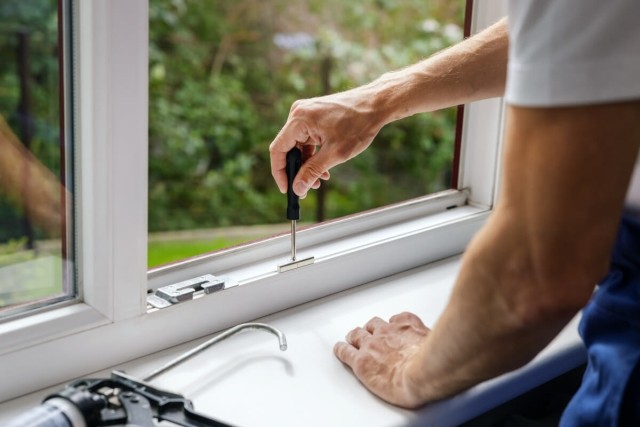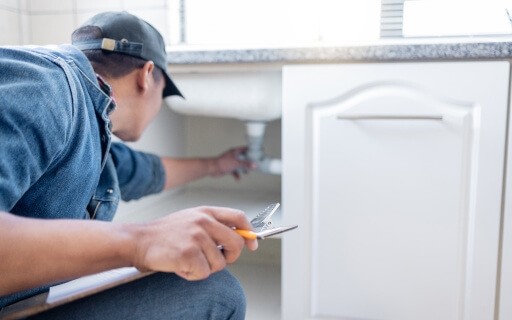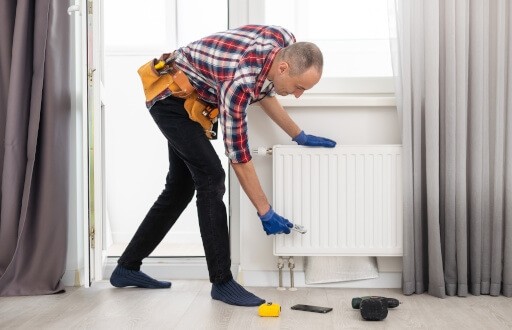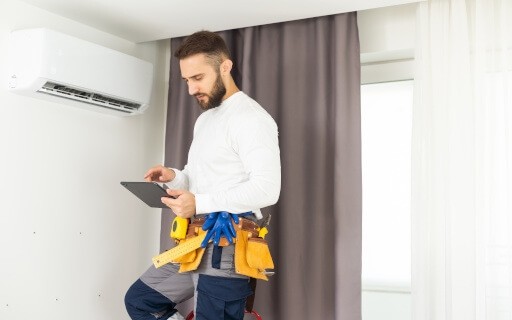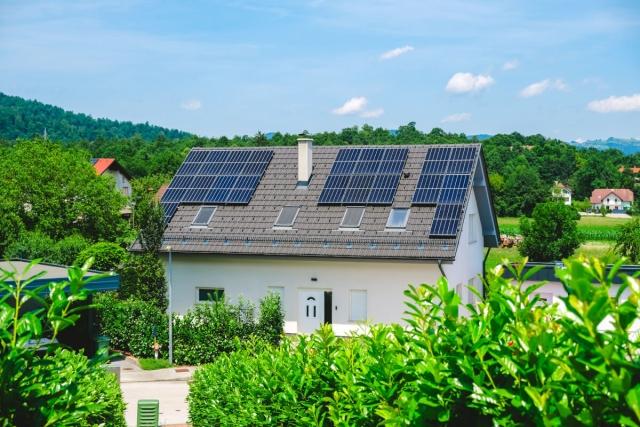
As the demand for sustainable living grows, eco-friendly properties are becoming more popular and this trend has been steady for the last couple of years. In March 2023, Freddie Mac surveyed that 54% of renters reported they would like to live in an environmentally friendly property. In March 2024, the National Association of Realtors conducted a survey that found 61% of their realtor respondents found clients were highly interested, interested, or somewhat interested in sustainability. Landlords are implementing eco-friendly features into their properties, enticed by the benefits of attracting tenants, increasing property desirability, and, of course, reducing their property’s environmental impact. As tenants are becoming more environmentally conscious, they are looking for rentals that align with this value. Invest in the Earth and in your property’s features with eco-friendly changes.
Transforming your rental property into an eco-friendly one can be daunting, but we will go over some remodeling tips for an eco-friendly home in this article:
- What is an eco-friendly home?
- Benefits of an eco-friendly property
- Key features of eco-friendly rental properties
- How to make your property eco-friendly
- The future of eco-friendly rental properties
What Is an Eco-friendly Home?
An eco-friendly home is one that minimizes its impact on the environment with features focusing on:
- Energy efficiency
- Water conservation
- Renewable energy sources
- Reducing fossil fuel use, waste, carbon footprint, and pollutants
- Resource conservation
- Indoor environmental quality
While many newly constructed residences are built with these features, existing properties can also be upgraded to be eco-friendly. It is a worthwhile investment as many renters express a desire for eco-friendly options as well as increasing regulations requiring some level of being green.
The Benefits of Eco-Friendly Rental Properties
Eco-friendly upgrades not only help the environment but also save you time and money. By reducing a property’s environmental impact, you open yourself to a world of benefits such as:
Lower operating costs and maintenance
Going green reduces utility costs through reduced use. ENERGY STAR appliances, WaterSense water fixtures, and LED lighting are excellent ways to introduce appliances that can help your building be more sustainable. Additionally, choosing the right building components can improve insulation, helping to retain heat and cool air, which lowers heating and cooling costs. By using durable materials that don’t degrade as fast, you only have to worry about the normal wear and tear, which saves both time and money.
Increased desirability
Upgrading your property with eco-friendly features not only increases its value but makes it more appealing to renters. In a study done by Simon-Kucher & Partners, 34% of consumers were willing to pay more for sustainable products/services. If renters are willing to pay more for sustainable clothing brands, then they are likely to do the same for eco-friendly properties. With increased demand and popularity, eco-friendly rentals are becoming highly sought after in the market. So, there is no shortage of benefits to having an eco-friendly property, making upgrading a smart move.
Key Features of Eco-Friendly Rental Properties
There are many changes that can be made to make an eco-friendly property. From inexpensive, smaller tasks to larger investments, there are many ways to improve the sustainability of your property.
Eco-friendly materials
Materials that are eco-friendly often require less maintenance, which saves you time and money. While you may not be able to replace all the building materials in your property, you could start by upgrading your flooring to a more sustainable option, such as eco-friendly wood veneers. For building materials to be eco-friendly, it should have a minimal impact on the environment. This could be through a variety of factors such as:
- Sustainability: Materials should be sourced from renewable or recyclable materials so that new materials do not need to be produced. An example is bamboo as it rapidly grows and regenerates.
- Energy Efficiency: Certain materials, such as concrete and brick, help reduce heating and cooling costs by better retaining the heat or the cool air.
- Low Emissions: Eco-friendly materials should have low or no emissions of harmful pollutants such as volatile organic compounds (VOCs) during manufacturing, use, and disposal.
- Durability and Longevity: Materials that don’t need frequent replacements are better for the environment as they cut down on waste and the need for new materials. When a material has lived through its life cycle, it should be able to be recycled or reused.
- Local Sourcing: Using local sourcing for materials greatly reduces transportation emissions.
- Biodegradability: Some building materials can decay naturally and in a way that is not harmful. If this is not possible, then it should be reused or recycled.
Energy-efficient appliances
ENERGY STAR certified products have been independently checked to meet strict standards for energy efficiency. These products not only include washers, dryers, and refrigerators but also furnaces, water heaters, air conditioners, and more. By using Energy Star certified products you can increase energy efficiency and save money, but also claim federal tax credits, rebates, and special offers on certified products.
LED lighting
LED lighting uses 75% less energy and lasts 25 times longer compared to incandescent lighting. With less of an energy draw, LED lighting saves money on electricity and replacement bulbs. With LED lighting, you can spend less time on a ladder changing bulbs, making a switch to them a smart decision.
Water-saving fixtures
A great way to reduce water consumption is to replace your water fixtures with ones that are water-saving fixtures. The Environmental Protection Agency (EPA) has a program to help you find water-saving products called WaterSense. By choosing WaterSense labeled products, you can reduce usage and save water and money.
Smart home devices
Smart home devices make energy efficiency effortless. From thermostats and lighting to plugs and appliances, these products learn and adapt to your patterns and habits. When you leave for work, your air conditioner will turn itself off. Smart home technology ensures comfort, convenience, and energy conservation.
Weatherization
Weatherizing your home means protecting it from the elements and the outside to conserve energy and increase comfort. Upgrading insulation, sealing gaps, improving ventilation, and controlling moisture are all part of the weatherization process. Doing this can help your property survive harsh weather and natural disasters as well as make your home more energy-efficient and cost-effective.
Solar energy
Solar energy offers a sustainable way to power a home through renewable energy. Thanks to continuing advancements in solar energy technology, it is becoming an accessible reality. With installation becoming more affordable as well as the availability of financial incentives for installing it, solar energy is growing in popularity.
How to Make Your Property Eco-Friendly
Going eco-friendly is easier than you might think. You can start small by switching to LED lighting or begin big by installing solar panels. Each eco-friendly home renovation you make helps your property go green as well as saving you money.
Start with an energy audit
Energy audits, or energy assessments, are a great starting point. These audits figure out what you can improve on your property to be more energy efficient. It determines how much energy your property uses, where it is inefficient, and identifies problem areas, then guides you towards fixes and recommendations to increase the comfort and reduce the environmental footprint of your property.
Home energy audits can be conducted by professionals who can create a roadmap to help you upgrade your property. You may be eligible to get a $150 tax credit for a home energy audit if you follow certain requirements, so be sure to read up on that. If you want to go more DIY, then you can perform your own energy audit by inspecting your property and making a list of problems and improvements.
Reduce paper use
With the rise of electronic options for payment and communications, you may have already switched over to these tools. These tools can be more convenient for both property owners and tenants, but it also contributes to sustainability by reducing paper usage.
Offer recycling or composting
Investing in recycling for your property can be a smart choice. Recycling services vary by city; some cities offer it while in others you may need to arrange a contract with a business. Also, check the regulations regarding recycling in your area as it may be a service that is required to be offered to tenants. Composting is another great way to reduce waste and turn it into a valuable resource. It makes waste management more sustainable and can be used in a variety of ways like gardening.
Take advantage of incentives
For those who make eco-friendly choices, there are a variety of financial incentives and assistance for doing so. The Inflation Reduction Act of 2022 created and expanded incentives for making homes eco-friendly. From rebates to tax incentives, research your local and federal programs to see what you could get for going green.
Educate your tenants
Let your tenants know what you have done to go green and how they can help continue that lifestyle. By doing so, you ensure that your eco-friendly initiatives are being fully utilized and cultivate a good relationship between you and your tenant. Consider creating a guide that details your property’s features and how to use them as well as other information on how your tenants can focus on sustainability.
The Future of Eco-Friendly Rental Properties
With eco-friendly rentals rising in popularity, the idea of upgrading a property to be eco-friendly is gaining traction. With renters focusing on sustainability, energy efficiency, and leaving as little impact on the Earth as possible, they are looking to find rental properties that reflect this. Technology and building practices are continuously advancing, making it more viable to have an eco-friendly property.
Increased demand
More people are wanting eco-friendly homes, including renters. By staying in tune with the growing demand, you can gain and keep renters in your properties.
Advancing technologies
Advances in technology are making it easier than ever to be eco-friendly. The cost of installing solar panels has gone down over the years due to technological advancements and installations process improvements. Incentives also help in reducing the cost. Smart devices have automated home management to be as energy efficient as possible. The technology surrounding eco-friendly homes will continue to grow and develop.
Stricter regulations
There are already many laws and regulations for protecting the environment and with an increasing focus on that, those rules may become even stricter. Additionally, incentives are being created to encourage people to go green. By upgrading your property now, you can stay ahead of future changes.
FAQ
What does eco-friendly mean?
Simply put, being eco-friendly means the product, policy, practice, etc. is not harmful to the environment.
How much does an eco-friendly house cost?
As it depends on the features of the home, the cost can vary quite a bit. There will be some up-front costs on upgrades but there are incentives and tax referrals to offset those. In the long term, those costs are often worth it as well. If you don’t want to spend too much, you can start small by switching to LEDs or installing weather stripping.
What is the most eco-friendly type of house?
If you want to look for a home type that is specifically eco-friendly, check out prefabricated homes or tiny houses. That being said, any home can be environmentally friendly with the right features and upgrades.
Showcase Your Eco-Friendly Rental with Apartments.com
Listing your property on Apartments.com is a great way to showcase the eco-friendly features of your rental. When you create your listing on Apartments.com, you can highlight your property’s unique, eco-conscious features, such as solar panels or energy-efficient appliances, helping to attract potential tenants. With the extensive reach of the Apartments.com network and rental management tools, you can market your rental easily and effectively.


